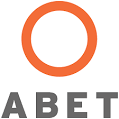CURRICULUM
Our undergraduate curriculum is both traditional and contemporary.
The curriculum includes mathematics and science courses which build a solid foundation for the civil engineering coursework. The civil engineering coursework emphasizes structural engineering, but also includes coursework in environmental policy and engineering, transportation policy and engineering, and water resources engineering. Our core program is comprehensive and address over 70% of the topics on the current Civil Fundamentals of Engineering exam. As juniors, students select a specialization in which to take four additional high-level courses.
Our faculty supplement lecture with hands-on physical and computational laboratory experiences to help students develop a deeper understanding of each course.
Our students are taught to think, to solve complex real-world problems, to recognize ethical and professional responsibility, to consider public health, safety and welfare and other factors, and to be leaders.
Overview of required courses by topic area (Details about Curriculum)
Recommended sequence of courses and their pre-requisites (Curriculum Matrix)
Planned offering of elective courses
ACCREDITATION
ABET ACCREDITATION
The CCNY Civil Engineering (C.E.) Bachelor of Engineering (B.E.) program is accredited by the Engineering Accreditation Commission (EAC) of ABET, https:// www.abet.org, under the General Criteria and the Civil Engineering (and Similarly Named Engineering) Program Criteria.
PROGRAM EDUCATIONAL OBJECTIVES
PEOs are broad statements describing the abilities and accomplishments of our alumni within a few years of graduation. They reflect the needs and priorities of our program’s constituencies, which include our alumni, their employers, our faculty, and our Advisory Board. The PEO for our Bachelor of Engineering program are:
- Advance in a career as a professional in Civil Engineering or in a related field;
- Uphold the highest level of integrity in decision-making;
- Understand and meet the evolving multidisciplinary challenges and needs of the multiple stakeholders and communities in which they work and live;
- Build on their academic preparation through lifelong learning, graduate study, engagement in professional societies, and/or professional licensure;
- Act as stewards of the profession who protect and advance the health, safety, and welfare of the public; and
- Serve the community and the Civil Engineering profession.
STUDENT OUTCOMES
SOs describe the abilities that our students will develop through our curriculum, that we believe lay the groundwork for them to achieve the PEOs listed above. The SOs for our Bachelor of Engineering program are:
- An ability to identify, formulate, and solve complex engineering problems by applying principles of engineering, science, and mathematics;
- An ability to apply engineering design to produce solutions that meet the specified needs with consideration of public health, safety, and welfare, as well as global, cultural, social, environmental, and economic factors;
- An ability to communicate effectively with a range of audiences;
- An ability to recognize ethical and professional responsibilities in engineering situations and make informed judgements, which must consider the impact of engineering solutions in global, economic, environmental, and social contexts;
- An ability to function collaboratively on a team whose members together provide leadership, create a collaborative and inclusive environment, establish goals, plan tasks, and meet objectives;
- An ability to develop and conduct appropriate experimentation, analyze and interpret data, and use engineering judgement to draw conclusions; and
- An ability to acquire and apply new knowledge as needed, using appropriate learning strategies.
ANNUAL STUDENT ENROLLMENT AND GRADUATION DATA
|
Academic Year |
Annual Enrollment in CE BE Program |
Annual Degrees Awarded to CE BE Students |
|---|---|---|
| 2000 - 2001 | 219 | 19 |
| 2001 - 2002 | 227 | 14 |
| 2002 - 2003 | 265 | 14 |
| 2003 - 2004 | 343 | 20 |
| 2004 - 2005 | 415 | 29 |
| 2005 - 2006 | 411 | 16 |
| 2006 - 2007 | 391 | 15 |
| 2007 - 2008 | 418 | 34 |
| 2008 - 2009 | 399 | 22 |
| 2009 - 2010 | 438 | 44 |
| 2010 - 2011 | 479 | 24 |
| 2011 - 2012 | 466 | 28 |
| 2012 - 2013 | 438 | 32 |
| 2013 - 2014 | 400 | 37 |
| 2014 - 2015 | 433 | 33 |
| 2015 - 2016 | 494 | 58 |
| 2016 - 2017 | 486 | 54 |
| 2017 - 2018 | 512 | 46 |
| 2018 - 2019 | 557 | 74 |
| 2019 - 2020 | 472 | 93 |
| 2020 - 2021 | 386 | 49 |
| 2021 - 2022 | 331 | 55 |
|
Academic Year: Fall and subsequent Spring semesters Annual Enrollment: Number of unique students enrolled in an academic year Annual Degrees Awarded: Number of Summer, and subsequent Fall and Spring graduates, in an academic year |
||
Last Updated: 10/16/2024 13:12
